The Captain catches up with respected boat designer Paul Bury, the man behind the computer behind many of the boats you drool over at the ramp.
WHO IS PAUL BURY?
Paul is the principal of Bury Design and has worked in the industry for over 20 years. Before starting Bury Design, he was chief designer at Tripp Design in the US; before that with Wally Yachts in Italy, working primarily with large, high-performance cruising boats. Paul trained as an aerospace engineer, has extensive sailing experience including two Sydney-Hobart and two Newport-Bermuda yacht races. He holds membership of Engineers Australia, RINA and is an accredited AMSA marine surveyor.
The Captain: Where did the love of boats start for you?
Paul: My father started a slipway and boat yard in Metung, Victoria, in the ‘50s. They specialise in maintenance for timber boats. It started fairly early for me, I was on a boat when I was three days old and grew up with an anti-fouling brush in my hand. Probably not a good thing! I remember the distinctive smell: a combination of anti-foul, rotting vegetation scraped from hulls and timber drenched in diesel.
Smells good to me. When did the design thing start?
I’ve always been interested in design. My father designed and built his own 27ft sailing boat. He used to converse with a famous yacht designer from the US called L. Francis Herreshoff. We also had a library full of bound copies of boat magazines. It was a passion that followed me through school.
Who do you work for now?
I’m the principal of Bury Design. The team also includes Dax Callagher. He grew up in New Zealand’s boating capital, the Bay of Islands, and has spent most of his life on the water, boating, fishing and diving. He’s the planing boat specialist, whereas I specialise in sailboat and high-efficiency motor-boat hull forms.
Together, we share a company called BC Tech, which is actively developing asymmetric planing catamarans for the sportsfishing market and specialised variants aimed at the commercial market. I’m also a partner in a boat-building facility in Thailand, currently building resort-based charter boats, but with an eye on the Australian fishing boat market.
What notable boat designs have your team worked on?
I worked for a company that designed Brindabella (Captain’s note: Brindabella held the Sydney to Hobart open record for 13 years and currently holds the record for conventionally ballasted yachts). I then headed to Rome and worked on a Pershing 86, a Riva-style day boat. Then I worked at Wally Yachts based in Monaco — they specialise in high-performance sailing boats. I spent some time in New York, had a kid and realised I didn’t want my children talking American back at me. So now I’m home in Swan Reach, Victoria.
Dax has worked on everything from ultra light-weight racing yachts, hydrofoil cats and commercial ferries to 60m-plus luxury superyachts.
How does Australian boat design compete on the international stage?
Australia is a small world as far as boat design goes. Imports are crushing local builders. The Kiwis have been leading the charge, though. Companies like Dickey, Whitepointer (NZ) and Stabicraft are shining lights for original boat design. NZ is a small market and there’s lots of skill over there, which creates an environment ideal for rapid evolution and it shows in the quality of vessels being produced over the ditch. Moda boats, built in Queensland also demonstrate a noteworthy commitment to their product development and have some impressive boat designs as a result.
What kind of work does your team do in Australia?
We do a lot of modelling work to facilitate the building of boats. We have designed a number of full vessels for manufacturers in Queensland including Cruisecraft and Blackwatch – these, were fully computer-controlled models for CNC manufacturing.
We also just completed restyled cabins for the Bass Strait Offshore 30 and the Edencraft 233 Formula Hardtop. Over the past 10 years we’ve designed a number of new models for Kiwi production builder Tristram Marine. Alongside Rayglass, they’re the biggest glass production builders in NZ.
We also undertake structural design and certification as well as stability assessments on these vessels. This is important if the boats are used for commercial service.
A little birdie told me you had a hand in developing the solid fibreglass transom on the Whitepointer 263, capable of handling 700HP.
Yes. We also did the structural design and stability certification on the Whitepointer 263. To achieve a 700HP rating for the transom we used some sophisticated software. By calculating the geometry of the boat, how big the construction panels are, how fast it goes and what sea state it can handle, the computer model is able to calculate stress and pressure loadings.
What trends do you see in the pointy end of boat design?
The main trend with the commercial guys I work with is trying to carry passengers offshore — the more passengers, the more money you can make. The regulations are now relatively strict, possibly the strictest in the world.
What regulations do you concern yourself with most?
Stability and “damaged stability” is what we’re talking about. It’s what happens to the hull when it gets holed or swamped. Typically, they run out of stability (as defined by AMSA) when they’ve got a large hardtop, a narrow beam and heavy construction. Stability also limits the number of passengers you can carry. Flooded keels are part of the answer because they give you more stability for a given configuration.
So what about size and weight? Does every builder work the limits?
Trailerable mass is the other part of the trailerboat building equation. Most manufacturers don’t want to go over 2.5m beam and 3.5 tonne total mass. That’s an envelope that is pretty clear and drives a lot of manufacturers.
Where do you see the innovation coming from?
The answer to that is better design and build. We’re not seeing that from local builders yet. The designs and the construction techniques haven’t changed much since the ‘60s and ‘70s. They seem to be the same basic designs just with more fishing gear and horsepower bolted to them.
So who breaks the mould, pardon the pun? Designers or builders?
As a design company we’re trying to lead the way by developing new models. One model we’ve been working on is an asymmetric planing catamaran. BC Tech has a 7.5m and 9m model in development. The 7.5m variant has the running length of a 9m boat because of the bow configuration. Stability is obviously better than a monohull and, in theory, the ride is much better because of the cushioning affect on the tunnel. This design will also use less power. It ticks all the boxes from a commercial operator point of view, being fully certified for 12 passengers offshore. The beam on our design is over 2.5m, but the weight will be the same as a standard 2.5m beam production boat. You can tow it with a LandCruiser, with some signage.
Do you prefer cats over monohulls then?
It’s horses for courses. If you’re trying to go very fast offshore, some people will swear that an asymmetric catamaran will be unbeatable. That’s what they race in Class 1 offshore racing. They don’t race monohulls out there.
What about standard symmetrical cats? Was Bruce Harris onto a winner back then?
I think symmetrical planing hulls (like a traditional Shark Cat) are flawed because they throw the wave inward, opposing the other wave and creating a huge rooster tail. There’s also significant drag in the tunnel. It’s not as efficient as it could be.
OK, dissect an asymmetrical hull for us.
Think of it as a monohull, chop it in the centreline and move it apart by the tunnel width. What you have is exactly the same geometry, the same strakes, and a keel that’s half as wide. With this design we’re trying to generate a certain amount of turbulence to give the boat the most cushioning effect. By turbulence, I’m referring to vapour, or a mixture of air and water. Air on its own is too compressible, but water is too hard, so achieving the right mixture of air and water in the vapour is critical.
How do you do that?
The hull is designed with chines and spray rails to deflect the vapour down and through the hull, rather than out the front of the tunnel, also know as “sneezing”.
Jeesh, now all Shark Cats have influenza? Tell me, what’s the construction of this future boat — alloy or glass?
We build prototypes in alloy because it’s easier to chop and change. But alloy is far more complicated to build — and it’s heavy, so it can be problematic on a lot of levels. FRP (fibre-reinforced plastic) makes a lot more sense, especially advanced composites, cored (separating the inside and outside skin) and vacuum-infused. We’re moving away from existing laminates that have a lot of chop strand mats, woven rovings and core mat (which, in my experience, are pretty shit), You can save a lot of weight — perhaps 40 per cent in structural weight if you do it that way. Once you’ve constructed the moulds for infused FRP construction, it’s a lot simpler to replicate.
So, what you’re suggesting is that Aussie boat builders are building unnecessarily heavy boats?
Some of these hulls have a lot of resins floating around in their structures. It doesn’t actually serve much purpose other than to add weight and cost. If you spray laminates in, they tend to be very resin-rich and not very strong. You also have limited control on how thick you can make them. There’s an art to it and these guys who have been building boats for a long time are very good at it. But nothing beats a proper vacuum-consolidated laminate for strength, light weight and consistency.
But boat builders keep telling us weight is a good thing.
If that were the case, they’d build them out of concrete.
OK, we’re learning fast here, Paul. Why haven’t we seen an asymmetrical fishing hull design trialled by Australian boat builders yet — or vacuum-bagged construction techniques, for that matter?
Well they’re very resistant to modernising their hulls. A lot of their designs came out of the 1960s and ’70s. Sometimes I feel like I’m chopping off their left foot! There is definitely room for positive evolution that will enhance the boating and fishing experience, and open up new markets. At the moment, many of the local builders are just appealing to the hard-core fishing types. All these boats tend to come from the same genus.
I hear you’re working with some local Aussie builders to develop better construction techniques out of Asia, but using existing Australian hull shapes?
We’re hopeful of modernising the construction of some local boats so they can be trailerable behind a LandCruiser when fully fuelled. We’re developing a process so everything is repeatable with no variations between hulls. Our plan is that everything is done dry in the mould, then resin is sucked through the whole thing. This process is known as “infusion” and if it’s done properly, there will be no voids and no quality issues. Ultimately it’s a manufacturing process — it’s not a boat-building process, and it’s significantly better than what you can do by hand.
How do you think the market will respond to Asian-built fishing boats?
There are definite concerns — a lot of crap gets built in Asia but also a lot of world-standard boats. What goes a long way to addressing the quality issue are procedures that don’t rely on user skill in the handmade way; processes that can be repeated. Consider that most of us own a car or iPhone built in Asia. It can be done with boats, too.
Why don’t Aussies build vacuum-bagged boats?
They can. The skills are here, but the problem is labour cost. This construction method will require more labour, but our labour cost in Australia is $50 an hour — compared to $5 an hour in Thailand where we have a free-trade agreement. Then there’s a critical mass of boats you need to build to make it worthwhile.
OK, goddit. When can The Captain’s crew legitimately flop a boat? We’ve got a Pongrass in a nearby paddock in our sights.
If somebody wants to copy a design, but then slightly change it, it’s quite a defensible and acceptable way to proceed. You can’t patent the four-wheel arrangement on a motor vehicle, and you can’t patent the deep-vee configuration on a monohull. And you can’t flop a boat off and bring it to the market unchanged. If the original manufacturer can identify all the points of the hull as being exactly the same you’d be in really deep shit.
How do we overcome that, because this “Ponni” is gonna be lit?
Hmmmm a “lit Ponni” you say, are you going to light it on fire? If so, this ticks all your boxes as it will be different enough to keep the lawyers off your back and you have also made a significant improvement to the vessel at the same time! Should you choose to forgo the matches, you might want to replicate the running surfaces of that hull, so we’d measure the geometry then make a very similar hull — but we’d make it better. Fundamentally, all hulls are very similar, just the details are subtly different — different chine geometries, strakes. Each manufacturer will tell you why they’re better — because of their differences.
Who will ultimately determine whether our Pongrass is sufficiently different to the original?
A patent lawyer can give you advice on that. At the end of the day, it’ll be determined by legal argument and it could take a lot of money to get to that point.
Any examples you can share?
Palm Beach Motor Yachts got done. Their first boat was a ripoff of a Hinckley. It’s a matter of record.
Alright, alright. You’ve talked us out of a dead-set rip-off. Assuming we move some things around below the waterline, how does it get from your computer screen to a real-life boat design?
Once we’ve developed a boat design, we’d typically work with a machine shop. They’d use a computer-controlled router with an adjustable robotic head to cut the shape from polystyrene. Then it’s coated in resin and final cut, leaving the manufacturer with a plug to build a mould around. I’ve built hulls 45m long using this method.
What are the challenges of a computer-controlled 3D model versus handcrafted?
It’s expensive and specialised skills are required. It could cost hundreds of thousands of dollars to get a 7m boat to production stage. Because of that, most Australian boat builders would rather use an existing model, hand-work a plug, then take a mould off that.
What’s the power source of the future?
In terms of efficiently getting power into the water, a modern outboard is still an economical, reliable and robust way to go. Outboard evolution will probably determine the way boats are configured. A 300kg, 300HP diesel outboard could conceivably replace twin-outboard configurations. If I were a commercial operator, I’d say “this is fantastic”, because I could put any weight-saving back in the ballast and carry more passengers.
Now we’re adding weight again, yeah? That old chestnut.
Ballast is something you want to steer clear of because you’ll be needlessly carrying excess weight around. But if you can carry an extra 100kg of ballast in the bilge and can get an extra passenger for that, then it’s worthwhile.
What about other power sources?
It’s rapidly evolving. You can buy electric outboards, but they’re too costly and don’t make sense. It’s not in the offshore scene yet, but it will be when technology and affordability catch up. Right now, there’s no better stored energy than fossil fuel. I’m talking diesel or petrol. The energy density on a battery is crap compared to these conventional fuel sources. As an example, an offshore boat with the energy source equivalent to a Tesla would get you out to sea, then leave you stranded. Eventually, however, electric outboards will be the norm, but it’s all about improving their stored energy.
What about sailboats? Will we see sail-powered fishing boats?
I don’t think so, but I do have a vision of modern sailboat hull forms in powerboats. I’m referring to high-efficiency powerboats, specifically. They will be the future for the cruising boat market in my opinion. Planing hull forms like Rivieras feature will go the way of the dinosaurs. The transition to hybrid power is going to require less power to be put into the water and a greater focus on efficiency. We recently designed a powerboat that cruises at 15 knots, maxes out at 24 knots and uses a quarter of the fuel of a similar size planning boat. That’s my vision for cruising powerboats, but not sports-fishing boats. You won’t see a fundamental change there, not in the short term anyway.
What boats do you own?
Dax has a 7.5m model Southern Lazer plate boat as well as a 4.5m tinnie. I have a 115-year-old, 47ft timber cruiser with an old Perkins diesel.
Now I’m really confused. Thanks for your time, Paul. That was a brilliant insight into boat design, I can’t wait to catch up in 20 years and see where it’s at.
Likewise.
Check out Bury Design for more:
+61 (0) 3 9005 6301.
BC Technologies dax@bc-tech.com.au;
+61 (0) 402 710 444.

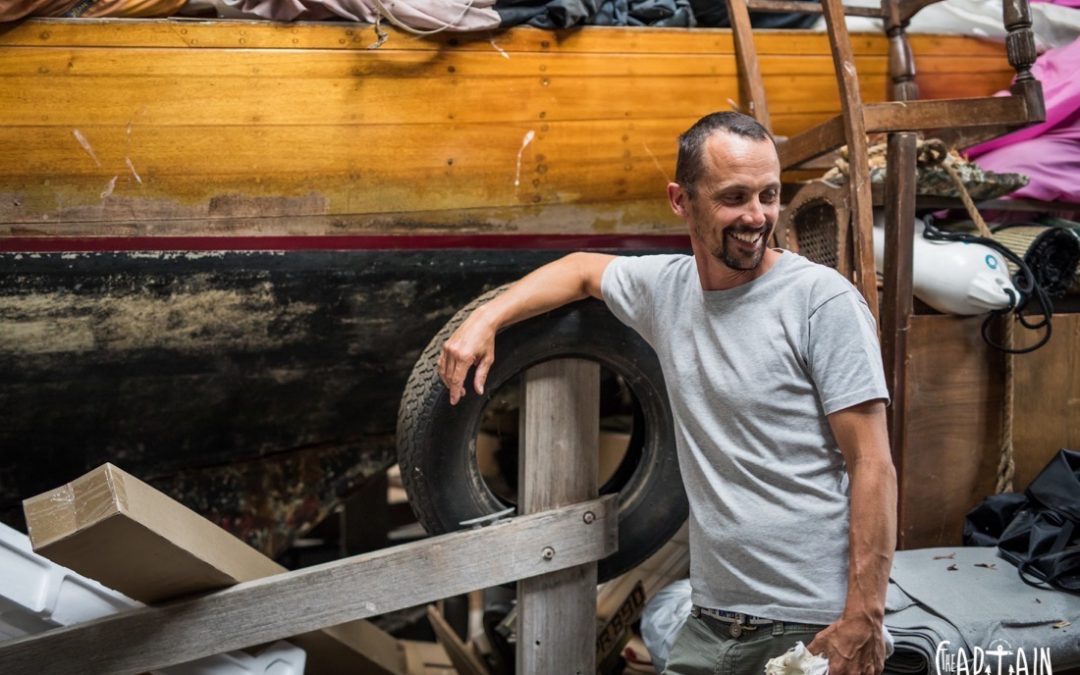

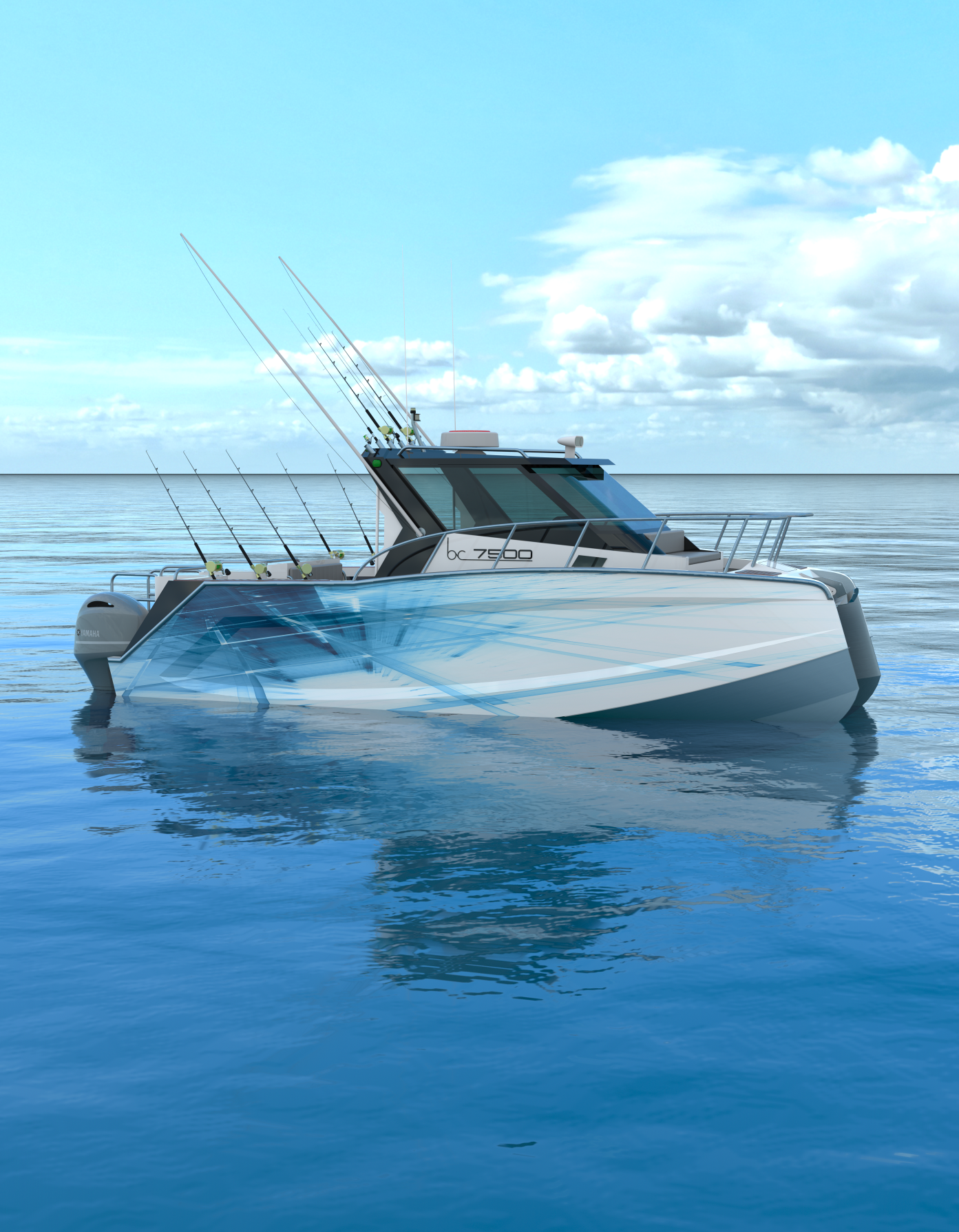
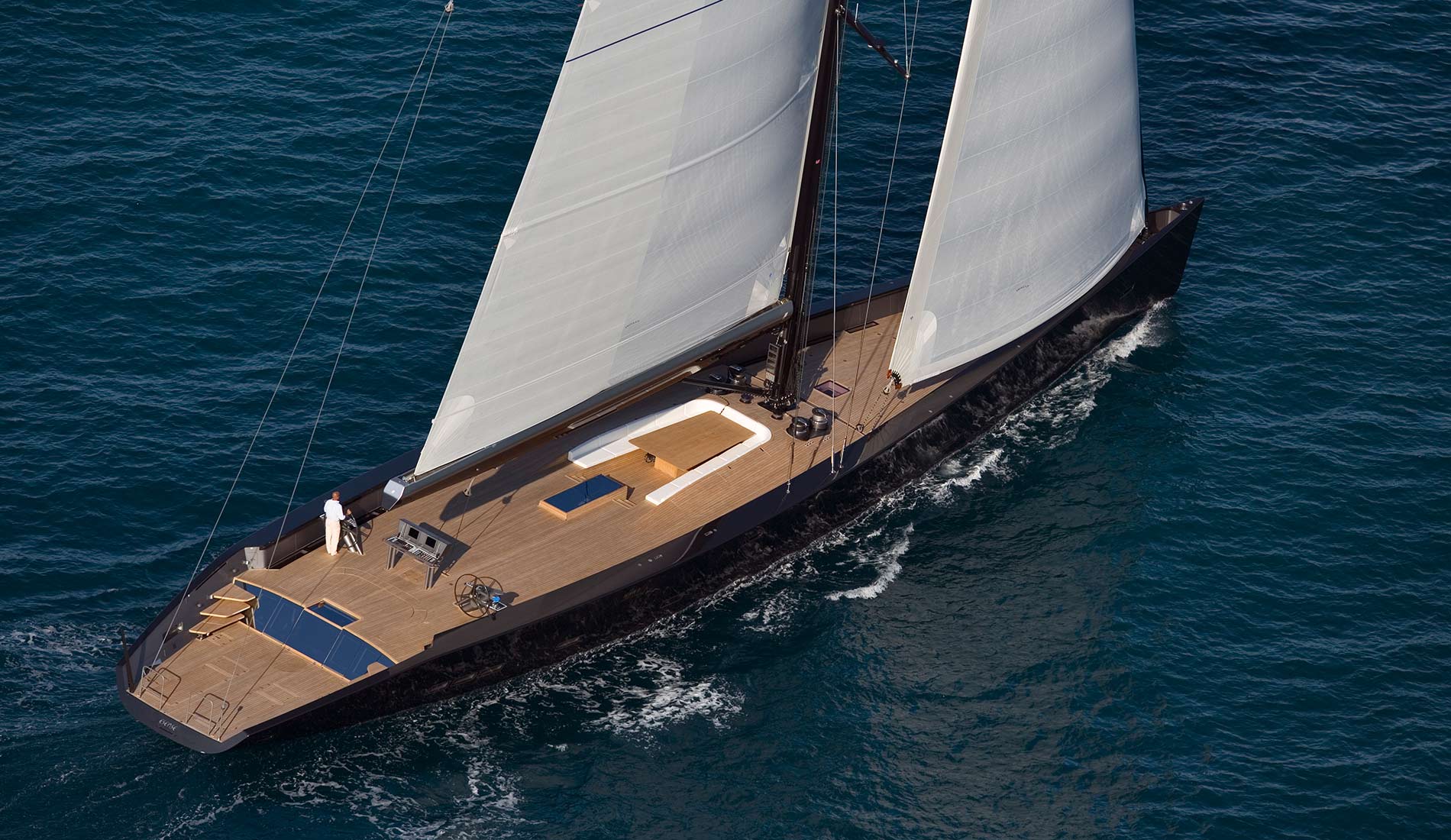
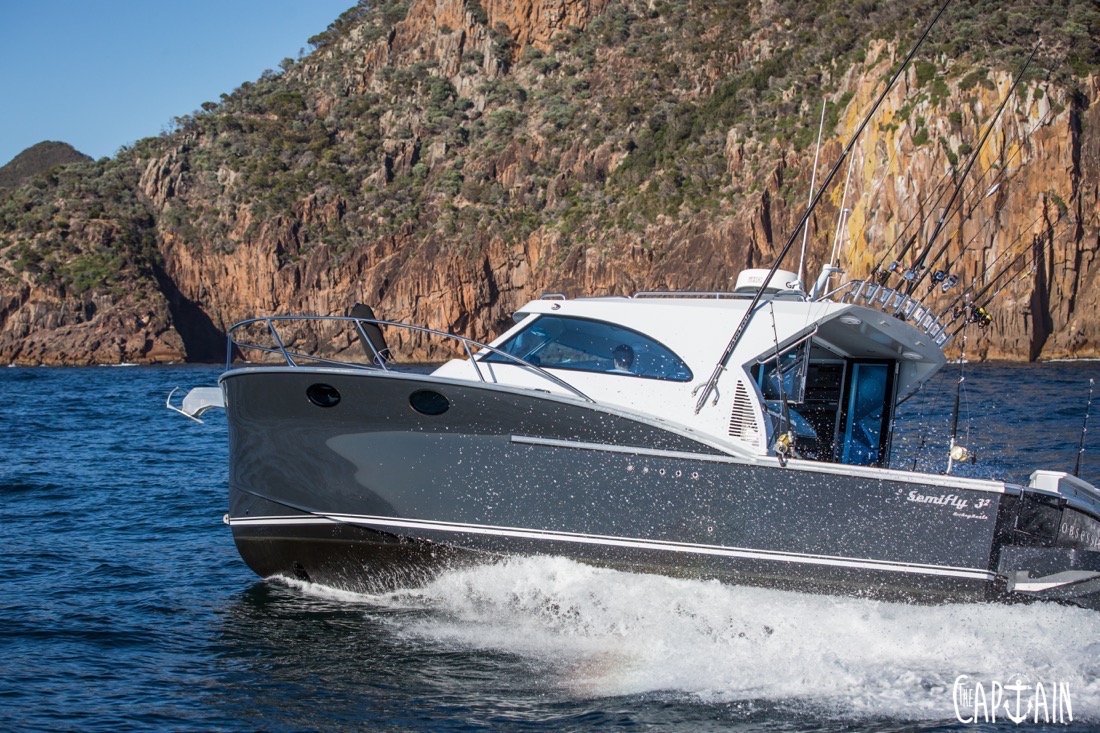
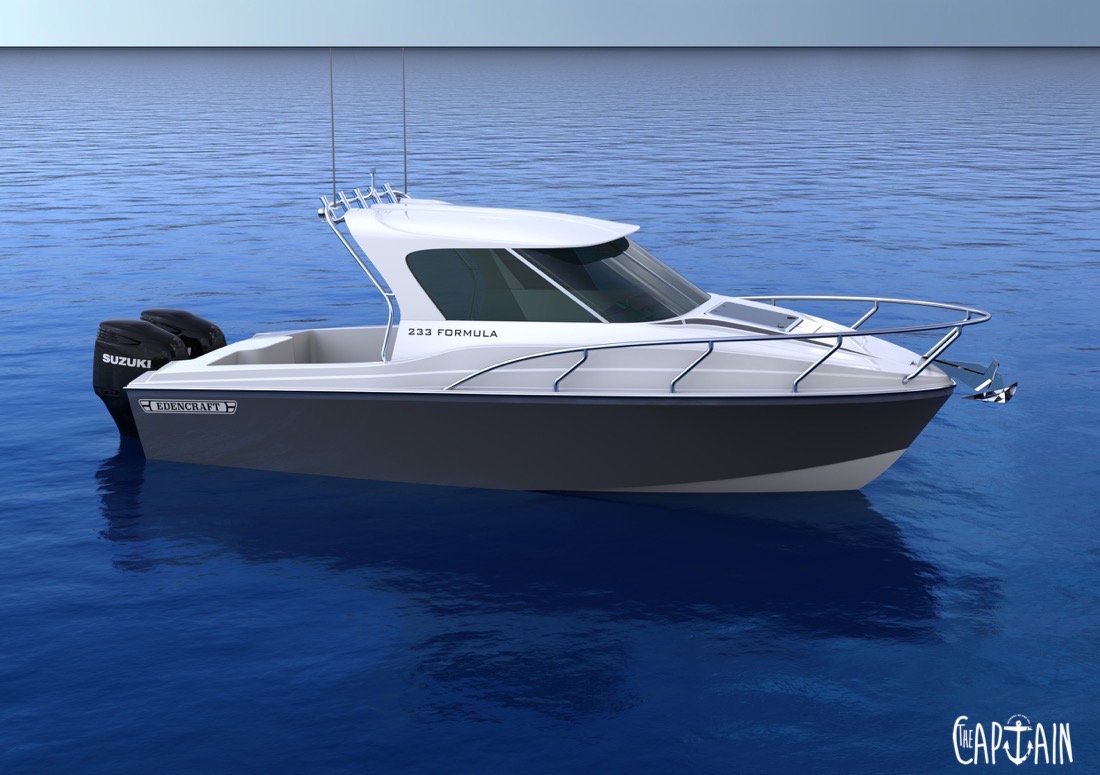
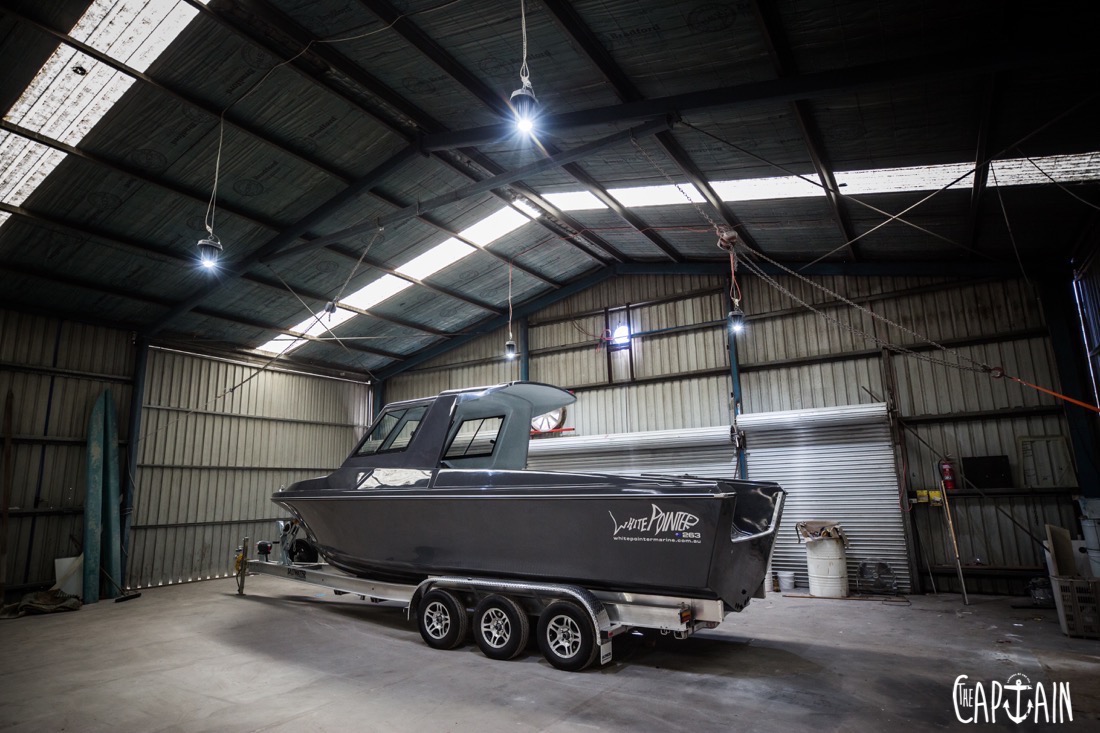
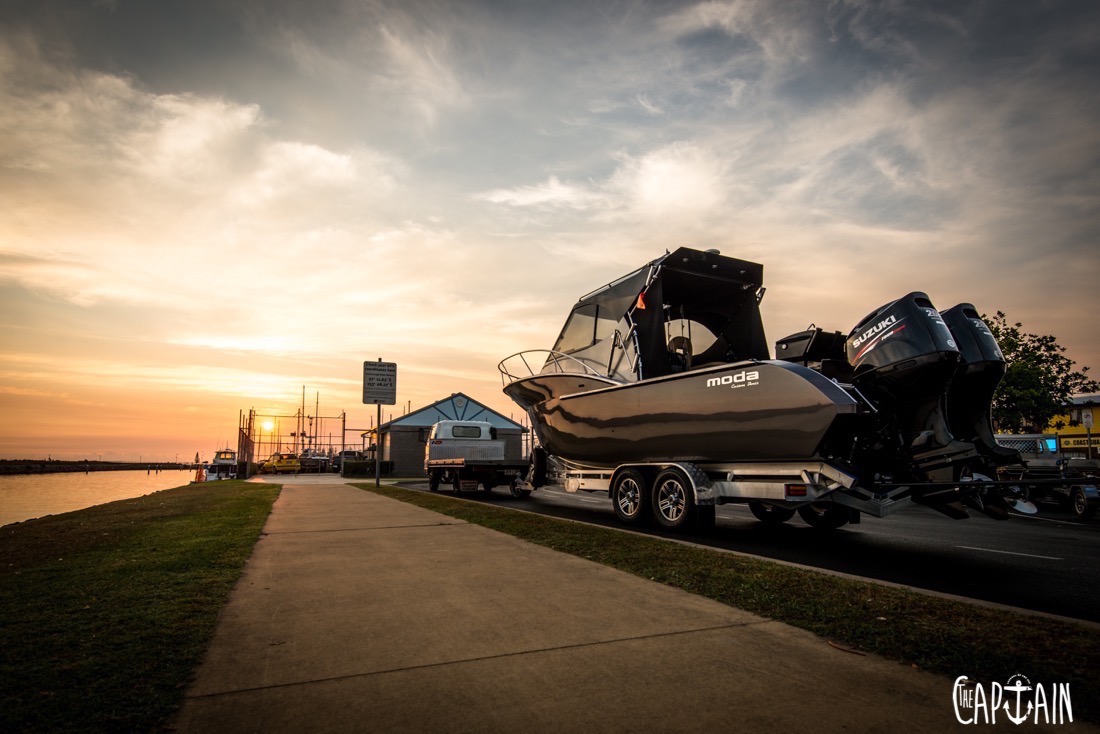
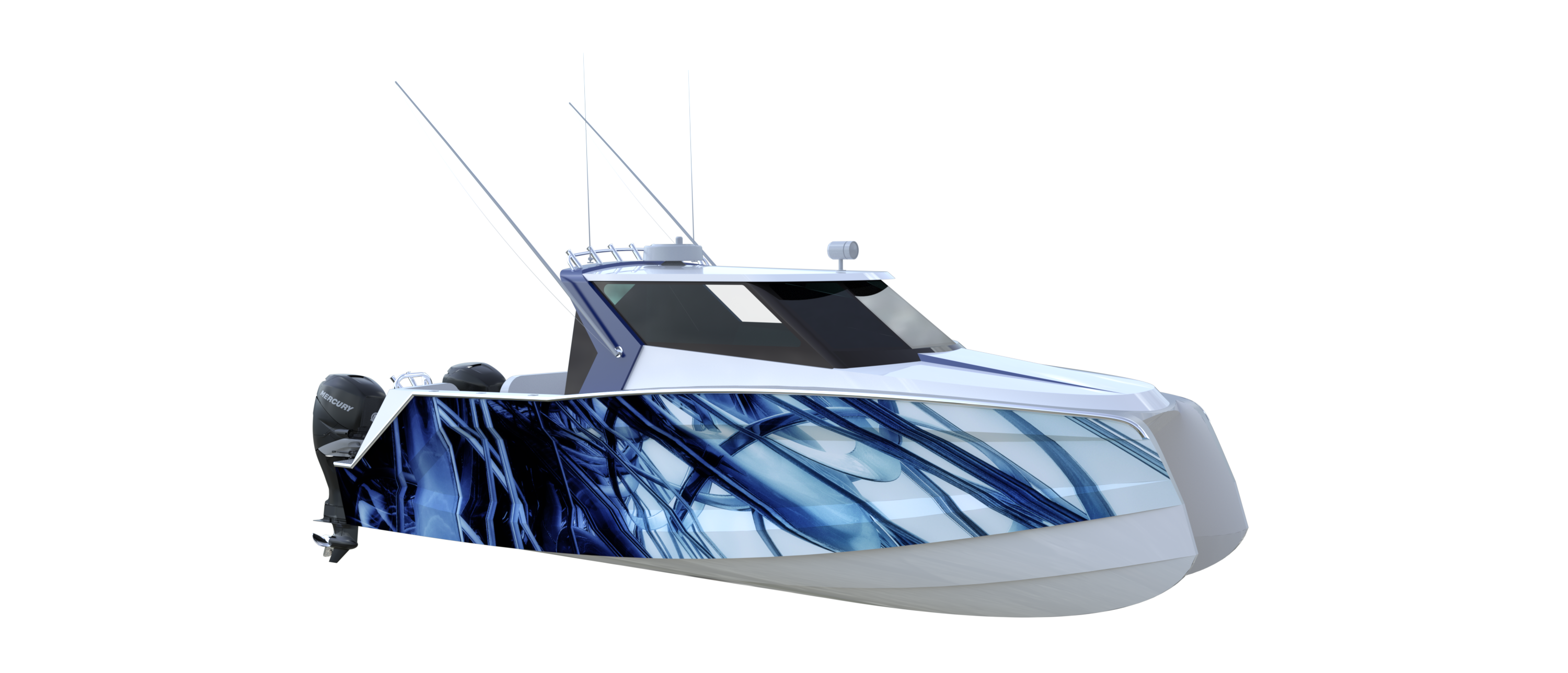
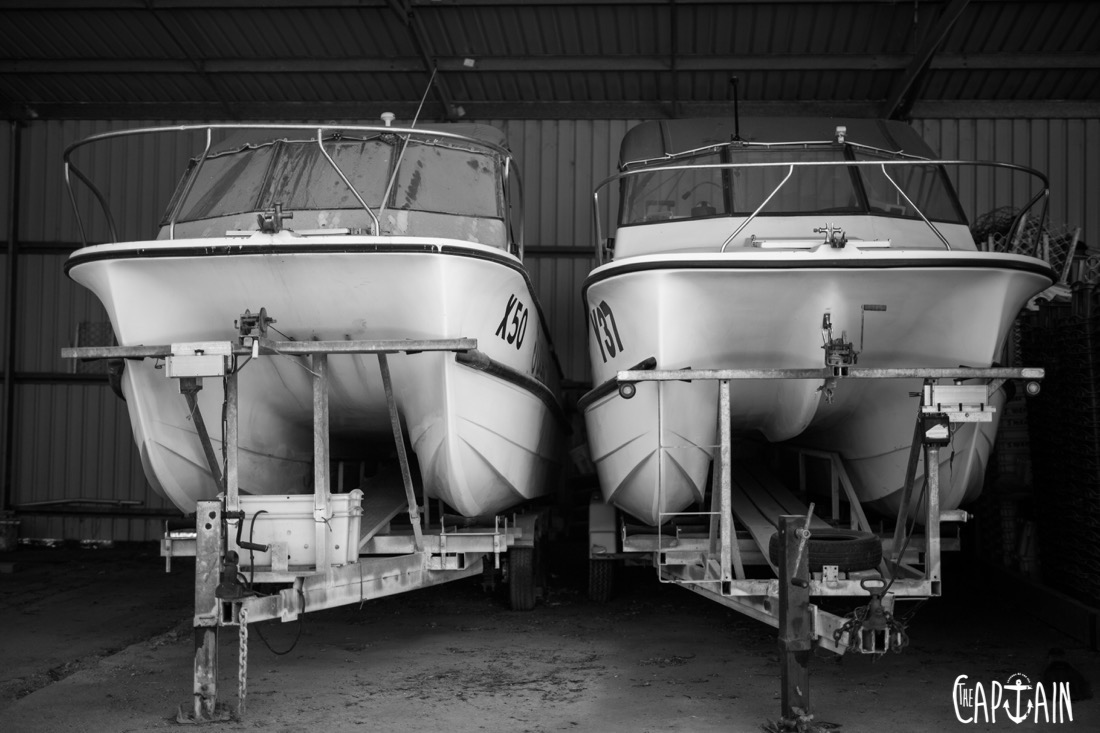

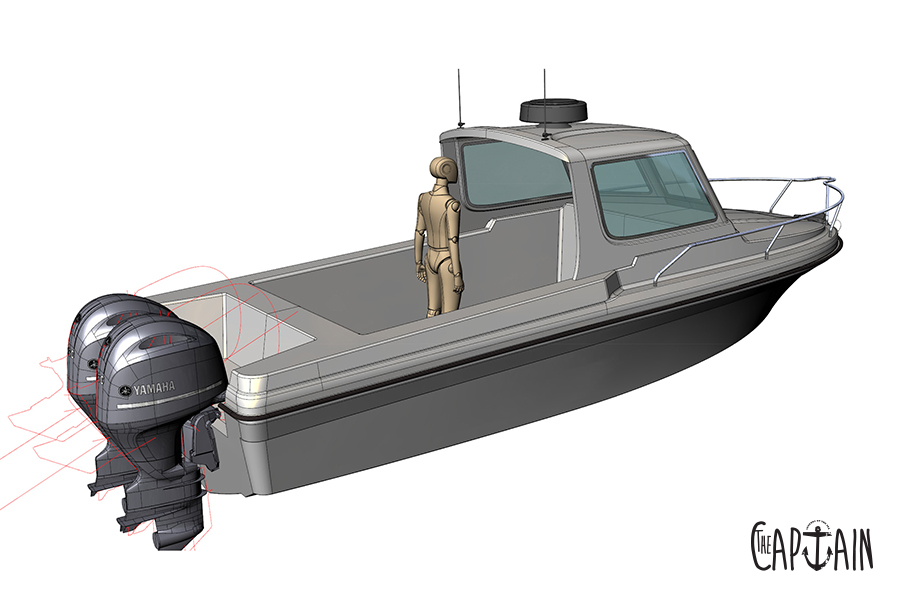
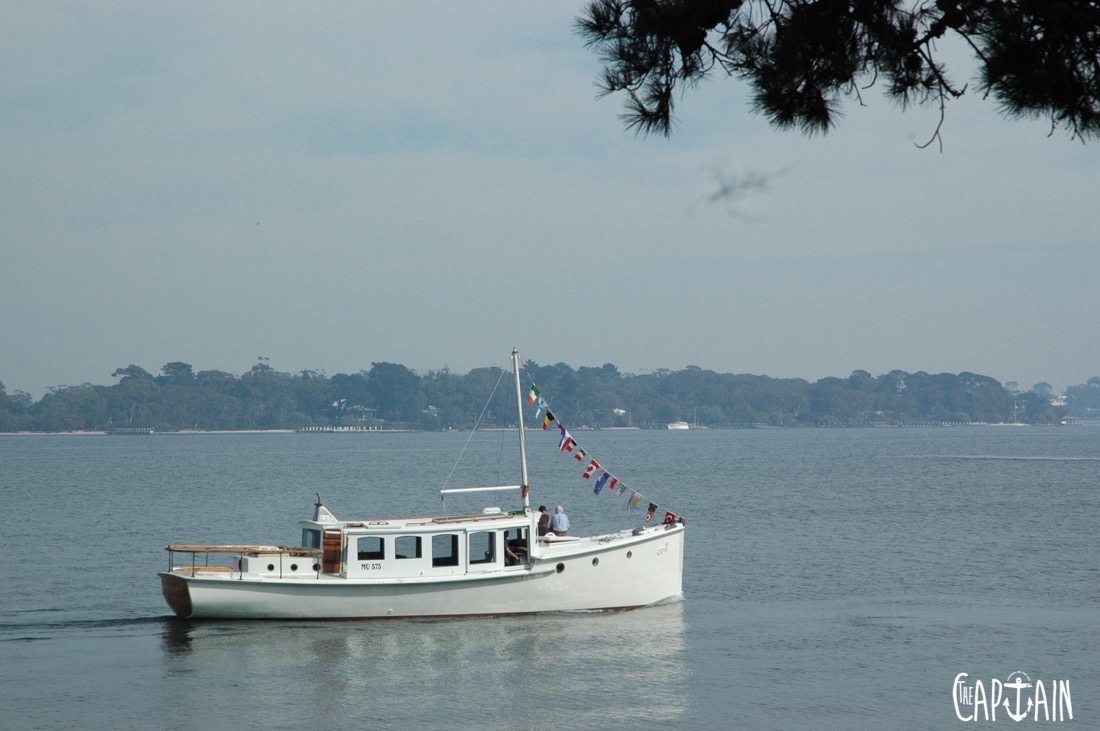
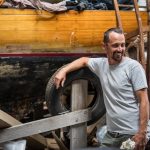
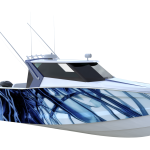
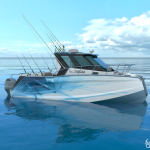
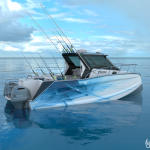
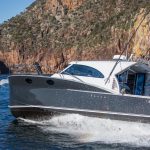
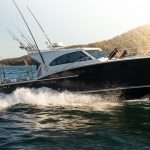
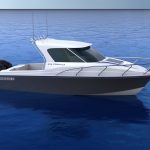
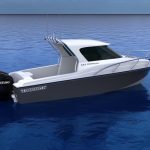
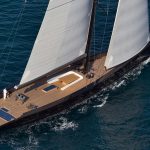
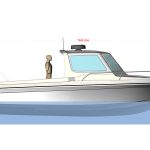
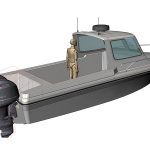
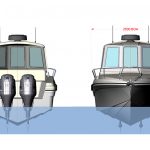
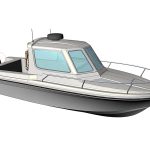
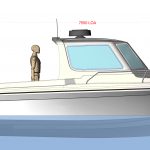
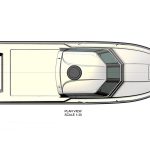
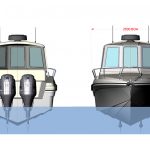
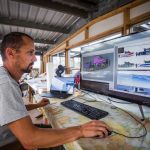
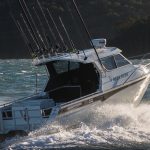
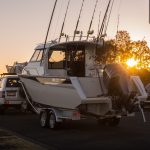
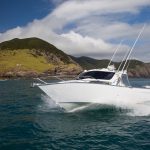
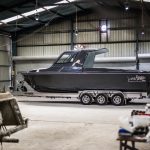
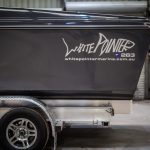
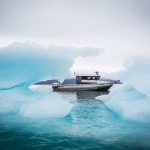
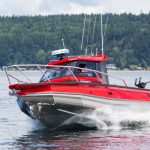
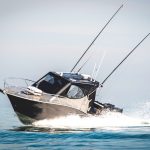
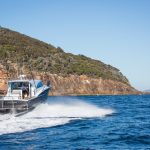
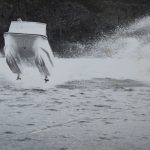
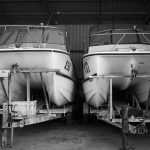
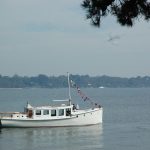

Recent Comments